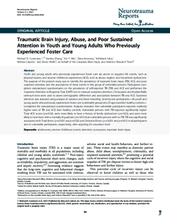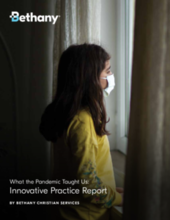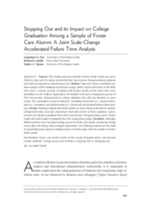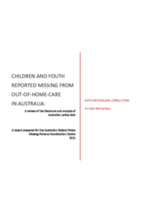Displaying 211 - 220 of 2214
This study examines service users' and practitioners' assessment of the feasibility of systematically evaluated interventions in the everyday life of foster care families.
The authors of this study examined caregivers’ mind-mindedness (their ability to adequately interpret their foster child’s internal mental states and behavior) in out-of-home care in the Netherlands, and the association among caregivers’ mind-mindedness (and its positive, neutral, and negative valence), recognition of the child’s trauma symptoms, and behavior problems.
The authors of this study used two independent methods to estimate prevalence of sex trafficking victimization among with prior maltreatment and foster care placements in one state in the U.S.
This paper presents the findings from an in-depth study exploring the educational experiences and self-determined educational successes of young people who spent time in foster care in New Zealand.
Through the lens of primary (ability‐driven explanations) and secondary (choice‐based explanations, conditional on educational performance) effects on social background differentials in educational attainment, longitudinal data from more than 14 000 Swedes (of which around 9% have been placed in out‐of‐home care (OHC)) were used to estimate the relative importance of these two basic explanatory processes.
The purpose of the present study was to identify the prevalence of traumatic brain injury (TBI), adverse childhood experiences (ACE), and poor sustained attention and the associations of these events in youth and young adults who previously experienced foster care.
This report summarizes findings from a mixed-methods case study of innovations and challenges within four Bethany foster care locations in the U.S.: Atlanta, Georgia; Philadelphia, Pennsylvania; Detroit, Michigan; and Grand Rapids, Michigan.
This study examines whether former foster youth are more likely to stop out of a 4-year university than low-income, first-generation students who did not experience out-of-home care.
This article explores the policy context and outcomes of the November 2020 announcement by the State (Labour Party) Government of Victoria in Australia that it would extend out-of-home care (OOHC) on a universal basis until 21 years of age starting 1 January 2021.
This report, prepared for the Australian Federal Police National Missing Persons Coordination Centre, sets out a national picture of children and young people reported missing in Australia.




